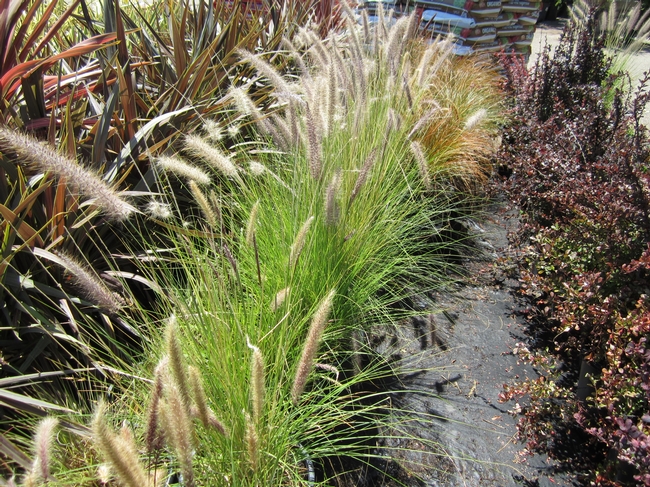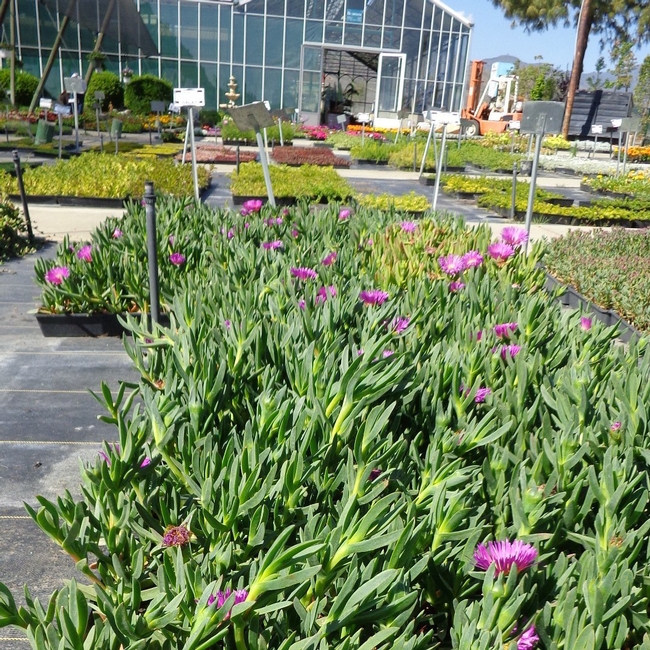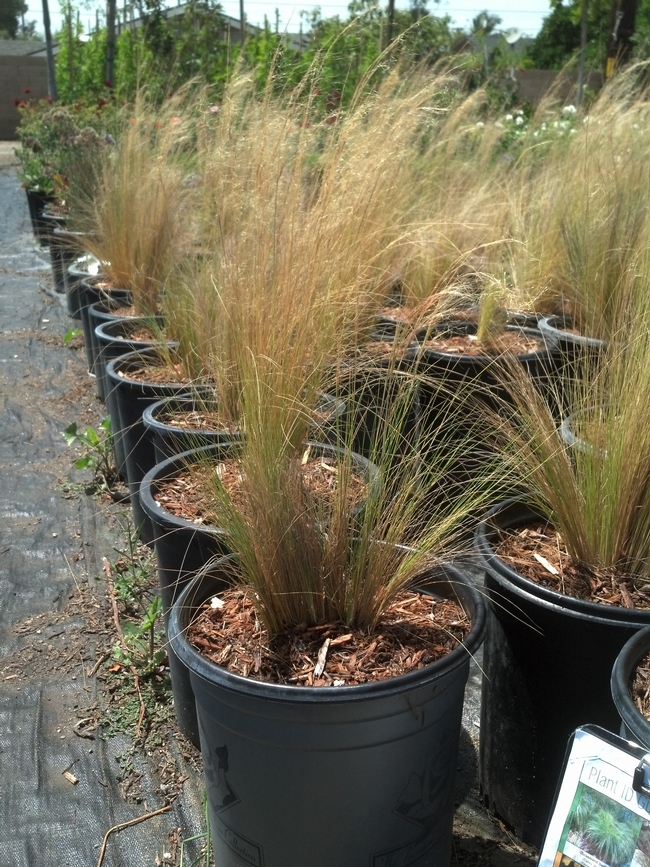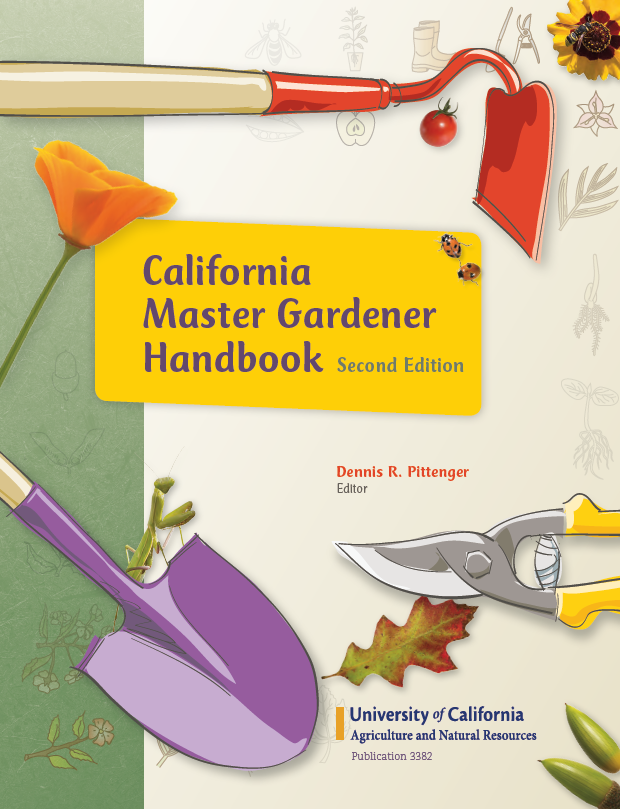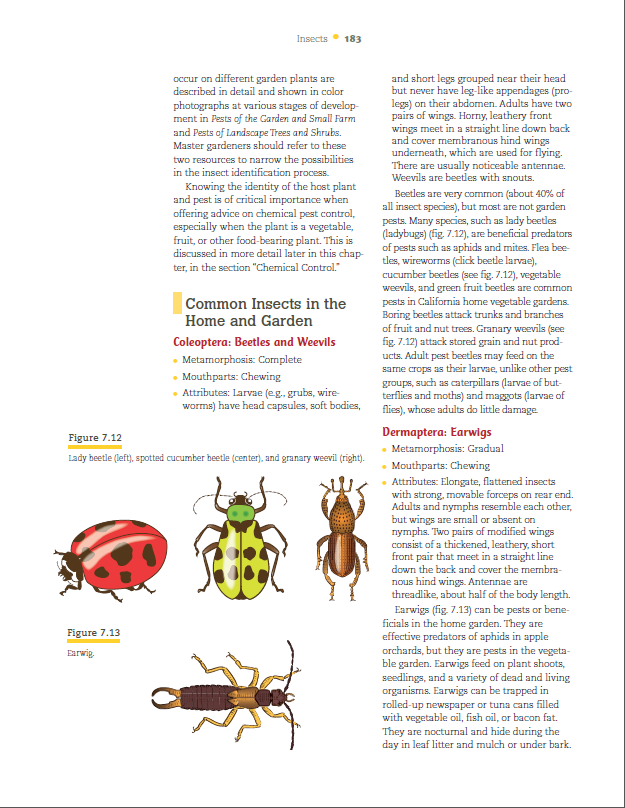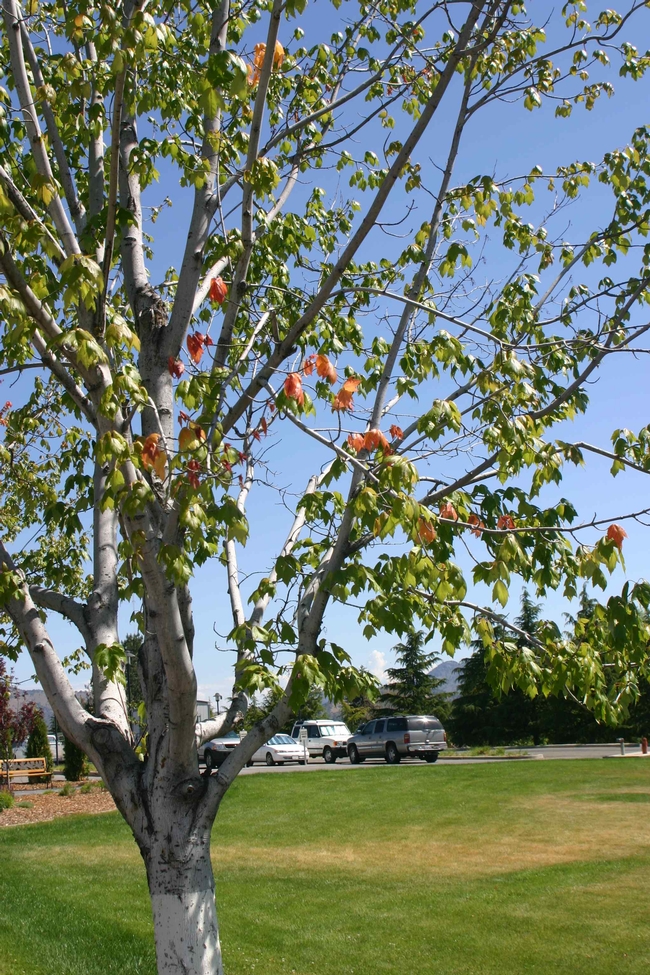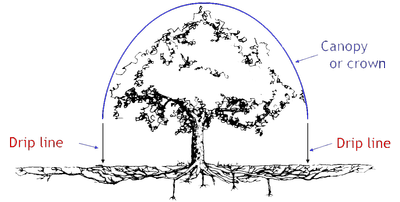In the News
How to Prune a Hybrid Tea Rose
>> CLICK HERE TO VIEW VIDEO <<
Many home gardeners plant roses in their landscapes because they can be easy to grow and produce a wide variety of beautiful scented flowers. If you live in California and you haven't already pruned your hybrid tea roses, don't wait! Now is the time to get out and prune.
Roses are typically pruned before dormancy ends in late winter to early spring. In most parts of the state this typically runs from Dec. 15 – Feb 15. The amount of pruning needed depends on the type of rose you are pruning. If you have the most common home garden rose, the hybrid tea rose (3 – 5 feet tall with large, mostly single flowers) they require more extensive pruning.
Watch this short video with Marcia Nelson, UC Master Gardener of Yolo County, and learn some simple tips about how to properly prune a hybrid tea rose for desired shape, growth and flower production.
According to the California Master Gardener Handbook, always remember to follow the fundamental pruning practices for all garden roses:
- Remove broken or damaged canes
- Remove rubbing or crossing canes
- Remove spindly canes, those smaller than a lead pencil
- Make clean cuts towards the outside of the plant at a 45° angle just above a bud or shoot
Help Stop Invasive Garden Plants from Overrunning California's Landscapes!
This spring, PlantRight is conducting its 6th Annual Spring Nursery Survey! UC Master Gardener volunteers can help PlantRight track the availability of invasive plants by simply visiting local nurseries. Check with your local county program coordinator to find out if your program offers volunteer hours for participation.
Participation in the 2015 Spring Nursery Survey is easy, educational, and fun! Volunteers will:
- View an online training
- Download required survey materials (e.g. survey form & plant ID key)
- Sign up to survey a randomly selected store in their county
- Visit the store and record information about any invasive plants being sold
- Submit information to PlantRight
The survey process takes approximately 2.5 hours to complete and can be done with other volunteers - if approved by your county these hours can count towards certification volunteer hour requirements. Returning volunteers may view the full training or a shorter refresher video.
PlantRight will host two training webinars to reflect different survey periods for Southern California (San Luis Obispo, Kern San Bernardino Counties and south) and Northern California:
Southern California Webinar:
Monday, February 23rd, from 7:30 – 8:30 p.m.
Northern California Webinar:
Wednesday, April 15th, from 7:30 – 8:30 p.m.
Sign up at: www.plantright.org/survey-registration
“2014 saw many common invasive plants decline in availability, yet some are more popular than ever. Help us prevent the next big invasive by making the 2015 survey our most successful yet!” –Chris Crawford, PlantRight Survey Manager
2014 Survey Highlights
Thanks to the dedication of more than 120 UC Master Gardener volunteers last spring, PlantRight's 2014 survey was a huge success. Drawing from data collected at 226 stores in 35 counties across the state, PlantRight saw a decline in the availability of invasive plants from their original list, from around 30% in past years to 19% of stores surveyed.
Driving this positive change was a large decrease in periwinkle (Vinca major), dropping from 17% in past years to 9% of surveyed stores. However, the number of stores selling the most recently added invasive plants on PlantRight's list (updated in early 2014) increased. Notably, the drought-tolerant emerging invasive Mexican feathergrass (Nassella tenuissima) increased in prevalence from 27% in 2013 to 38% in 2014.
A comprehensive report and simplified fact sheet detailing the results can be found on the Spring Retail Nursery Survey – 2014 Fact Sheet. These results act as PlantRight's guiding light, shaping its strategy and helping it move forward collaboratively with the nursery industry.
2015 New Plant List
After a year-long review, PlantRight is very excited to share its brand new 2015 list of Suggested Alternatives for Invasive Garden Plants. This list identifies the top ten priority invasive plants for sale in California and provides recommendations on beautiful alternatives. Without the help of the UC Master Gardeners and the data collected from the annual spring survey, the new and improved list would not have been possible.
We are proud of what we've accomplished together with the UC Master Gardener Program, and look forward to working together again in 2015!
-- For questions, contact Chris Crawford, PlantRight Survey Manager, at ccrawford@suscon.org or (415) 977-0380, ext. 331.
California Master Gardener Handbook - 2nd Edition - Has Arrived!
The highly anticipated 2nd Edition - California Master Gardener Handbook has arrived and is available online for purchase to the public. The California Master Gardener Handbook has been the premiere choice for gardening enthusiasts on the West Coast since it was first published in 2002.
The trusted California Master Gardener handbook is a valuable resource that is packed with research-based information and more than 21 in-depth home horticulture topics. The handbook offers advice on home vegetable gardening, plant propagation, landscape design, insects, water management, weeds and much much more!
What's new inside?
The completely redesigned handbook has updated tables, graphics and color photos throughout. Technical information has been updated by University and industry experts and the handbook is more reader-friendly with a reorganized flow of information.
“The second edition handbook has been a true labor of lots of hard work and dedication and the result shows! The handbook includes many updates and expanded coverage of important topics of interest to UC Master Gardeners and avid backyard gardeners as well. The Water Management chapter include timely topics such as use of graywater and more coverage of edibles than the first edition. Controlling Garden Pests Safely, Landscape and Garden Design, Poisonous Plants and other chapters have been updated and expanded to reflect accurate information pertinent to the needs of today's environmentally-conscientious gardeners.” - Janet Hartin, Environmental Horticulture Advisor, San Bernardino, Riverside and Los Angeles Counties and UC ANR Environmental Horticulture Associate Editor
How to order
“We received our new handbooks yesterday and believe me, they are well worth the wait--a beautiful publication that we can all be extremely proud to have as our primary educational resource. Congratulations and thanks to everyone at UC ANR who worked on updating this truly impressive publication!!” - Linda Baity, Program Coordinator, Santa Clara County
If you are a currently certified UC Master Gardener volunteer check with your local program coordinator about purchasing the new publication. All active UC Master Gardeners receive a 40 percent discount on the publication which retails for $37 to the public. Members of the public can order a copy of the publication through a local UC Master Gardener Program or by using the UC ANR online catalog.
Do you already have a copy of the new handbook? We'd love to hear your feedback in the comments section below!
Save Trees during Drought with New Tree Ring Irrigation Contraption (TRIC)
From a majestic oak, giant sequoias or a swaying palm there is nothing quite as beautiful in this world than a tree. They can provide us with shade, fruit, flowers and most importantly are the “lungs of planet”. While we have enjoyed some wet weather over the last week, California is still suffering from extreme drought conditions.
Prioritizing Trees for Landscape Water Use
Many residents have been encouraged to reduce water use by turning off their outdoor watering systems, but this may be causing stress to established trees that are becoming increasingly thirsty for water.
In most traditional residential landscapes trees are surrounded by turfgrass. Turfgrass surrounded trees take advantage of the frequent and shallow watering schedule, typically set to help the lawn flourish. When residents eliminate or reduce water for lawns, trees cannot easily adapt to the new water shortage.
“Mature fruit trees and landscape trees are worth saving! Recognizing early signs of drought stress is important because irreversible damage can occur that no amount of watering will correct.” said Janet Hartin, UC Cooperative Extension advisor in a recent article, Save Water, But Also Save Trees During a Drought.
Replacing small plants, lawns and shrubs is easy compared to a large tree which takes years to become established. Saving mature trees during a drought should be a top priority in your landscape water use allocation.
“Two seasons without enough water can result in severe drought stress and even kill a tree,” warned Hartin. “Also, drought-stressed trees are more prone to damage from diseases and insects than non-stressed trees.”
Understanding how to water a tree effectively is important to avoid water waste and to ensure that the tree is receiving the correct amount of water for its survival.
One key factor to successfully watering a tree is understanding what soil type is present. Understanding soil types is an important factor in determining how much water is stored in the ground. For example, sandy soils dry out quickly while clay soils retain more water. Contact your local UC Master Gardener Program to learn how to determine your soil type.
Tree Ring Irrigation Contraption (TRIC)
Recently the Calif. Center for Urban Horticulture (CCUH) at UC Davis, UC Division of Agriculture and Natural Resources (ANR) and Ewing Irrigation devised a unique watering system called the Tree Ring Irrigation Contraption (TRIC). Using previous data from Netafim drip tube tables and from the Irrigation Association Landscape Irrigation Auditor manual, the partners envisioned a possible solution to mitigating drought conditions and the effect on landscape trees. The TRIC is an inexpensive kit that homeowners can put together for around $100 for one large tree.
The TRIC could enable homeowners to adequately water trees to a depth of three feet with confidence, by using the recommended parts and using the TRIC calculator with accurate information. Aside from a recommended parts list, there is a “plug-in” calculator created by Dr. Loren Oki, UC ANR Associate Specialist in Cooperative Extension Landscape Horticulture for UC Davis & UC ANR. The TRIC calculator helps determine the run-time needed for the device.
Learn more by visiting:
- CCUH – Tree Ring Irrigation Contraption website
- TRIC Parts List
- TRIC Calculator
- TRIC PowerPoint Presentation
Register Today for the Dec.1, 2014 Pest Management Seminar for Professional Landscapers in Southern California
Are you a landscape contractor, arborist, parks or school district landscaper, irrigation specialist, or golf course superintendent working in Southern California?
Do you want to earn maximum PCA/IA/GCSAA/ISA accreditation hours and learn how to prevent, identify and control common landscape diseases, insects, and weeds from University of CA and other experts?
If so, register today for our Dec. 1, 2014 Univ. of CA Pest Management Seminar. Cost is $25 per person and includes lunch and morning coffee break.
(7 DPR PCA/QAL/QAC hrs; 7 ISA hrs; 7 IA ceus, .7 GCSAA education points applied for).
Location: Chino Basin Water Conservation District,4594 San Bernardino Street, Montclair, CA 91763
Ways to Register and Pay (deadline to register is Nov. 24, 2014):
1. To pay by credit card, register here: https://ucanr.edu/survey/survey.cfm?surveynumber=14095 to pay by credit card.
2. If you are employed by a gov't agency and want to use a purchase order, please email it to jshartin@ucanr.edu along with the list of registrants and the agency to be charged.
3. If you want to pay by check, please make the check payable to UC REGENTS and mail it to Janet Hartin, UC Cooperative Extension, 777 E. Rialto Avenue, San Bernardino, CA 92415.
Questions! Contact Janet Hartin at 951.313.2023 or jshartin@ucanr.edu
Pest Management in the Landscape Program (Dec. 1, 2014)
8:00 - 8:15 AM: Check-in and Coffee
8:15 - 8:30 AM: Welcome
8:30 - 9:30 AM: Insect Borers: Prevention, Identification and Control (Timothy Paine, PhD, Dept of Entomology, UC Riverside)
9:30 - 10:30: Weed Control Update (Cheryl Wilen, PhD, UC ANR Area IPM Advisor)
10:30 - 11:30: Abiotic Disorders of Landscape Plants (Janet Hartin, UCCE Area Environmental Horticulture Advisor)
11:30 - 12:30: Lunch (on premise)
12:30 - 1:30: Phytophthora, Armallaria, and Other Disease-causing Pathogens (Jerry Turney, PhD, Los Angeles County Ag Commissioner Plant Pathologist)
1:30 - 2:15: Wildland/urban Interface Issues: Herbicide Screening to Control Buffelgrass (a close relative of fountain grass)
2:15 – 3:15: Biological Control of Invasive Insect Pests in California: Updates on Asian Citrus Psyllid and Brown Marmorated Stink Bug (Mark Hoddle, PhD, Dept. of Entomology, UC Riverside)
3:15 - 4:15: Laws and Regulations Update (San Bernardino Ag Commissioner - Speaker TBA)
4:15 - 4:30: UC ANR IPM Resources (Janet Hartin, UCCE Area Environmental Horticulture Advisor)
Dec. 1 Landscape IPM Conference






